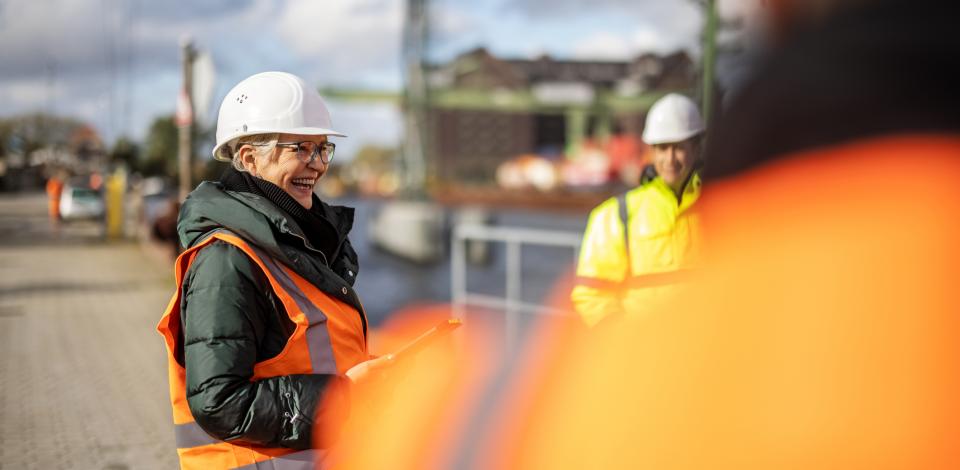Workplace Health and Safety Tips
Discover essential workplace health and safety tips and steps for avoiding hazards on the job.

Creating a safe and healthy work environment is essential for the well-being of employees and the success of any organization. Investing in workplace health and safety not only helps prevent accidents and injuries but also supports productivity, employee morale, and legal compliance. Whether in an office, manufacturing facility, healthcare setting, or on a construction site, prioritizing safety shows a commitment to the people who keep operations running.
Why Is Workplace Safety Important?
Prioritizing workplace safety reduces and prevents the negative impacts of workplace accidents. In addition to saving lives and preventing injuries, workplace safety shields businesses from legal repercussions and reputational damage. It also helps prevent economic losses related to direct medical costs, workers' compensation, administrative expenses, and reduced productivity. For example, the National Safety Council reported that, in 2019 in the U.S., “work-related deaths and injuries cost the nation, employers, and individuals” an estimated $171 billion.
Safe workplaces support happier, healthier, and more productive employees while also mitigating risk. Workplace safety regulations, guidelines, policies, and industry best practices have made a dramatic difference over time. According to OSHA, 2023, nonfatal injuries and illnesses were down to an average of 2.4 incidents per 100 workers compared to 10.9 per 100 workers in 1972. Additionally, the average number of worker deaths was reduced to 15 per day in 2023, compared to 38 per day in 1970.
Essential Workplace Safety Tips
While, of course, there are safety standards and regulations that apply to specific types of work environments, the following workplace health and safety tips can help reduce injuries in any kind of job setting.
1. Proper Machine and Equipment Use
Only workers who have been properly trained (certified and licensed, when applicable) to operate tools, machinery, and heavy equipment should use them. They should only be used for their intended purposes as well as cleaned and maintained regularly.
2. Maintain Safe Conditions
Keeping the work environment organized and clean is key to safety. Simple measures like avoiding an overly cluttered space and wet floors can help prevent accidents — as slips, trips, and falls are the leading cause of occupational injuries. Additionally, tools and equipment should be stored safely, and regular workplace inspections for potential hazards should be conducted by team members and supervisors to identify and remove hazards immediately upon detection.
3. Proper Handling and Storage of Hazardous Materials
A primary component of maintaining safe conditions is the proper labeling, storage, and handling of potentially hazardous materials and toxic substances (e.g., chemicals, solvents, paints, combustibles, cleaning agents, etc.). These should always be labeled clearly and handled and stored according to their manufacturers’ instructions. Safe storage of hazardous materials means they should be inaccessible to those who do not require access to them, as well as stored at the right temperature and away from chemicals that could be dangerous if mixed.
4. Plan and Follow Emergency Procedures
Every workplace should have an evacuation and emergency plan. This encompasses fire safety along with instructions for responding to natural disasters. Your workplace should have evacuation plans displayed, plus protocols for taking headcounts and a designated safe meeting location.
5. Safety Training and Drills
Workplaces should conduct regularly scheduled safety training. This can include topical safety subjects in addition to information intended to refresh everyone on daily safety practices. Employers should also routinely run evacuation drills so that evacuating the building can be performed safely, calmly and quickly during an emergency, such as a fire or natural disaster.
6. Use Personal Protective Equipment
Safety gear, also called personal protective equipment (PPE), should be provided by management and worn by all employees in the designated areas. For example, some of the most familiar PPE items include:
- Hard hats
- Gloves
- Eye and ear protection
- Steel-toed boots
- Harnesses
- Respirators
- High-visibility clothing
- Medical face masks
- Ample drinking water
Items vary based on the work environment. PPE necessary for a construction site will differ from what's required in a laboratory, clinic, classroom, cruise ship, kitchen, or office. PPE includes any items that workers need to keep themselves protected from workplace hazards such as electrical dangers, heights, chemicals, or extreme weather conditions, and employees must receive training from management on these items.
7. Communicate Hazards
This step consists of two types of communication:
- Every business should have well-defined communication channels to alert people of potential dangers, such as slippery floors, spills, falling items, evacuation, or other dangerous situations. These channels may include signage, broadcasts, or internal notification systems.
- A culture of transparent communication within the workplace means that employees should be encouraged to speak up when they see something that isn't right — such as a safety protocol violation, missing safety gear, faulty equipment, or any other potential hazard.
Clear, open, and upfront communication throughout the workplace is crucial to creating a positive and safe workplace culture. Employees should feel empowered to be aware of their surroundings, follow safety rules, and take proactive steps to keep each other safe.
Secure Your Workplace and Elevate Your Career with Occupational Safety and Health Training
Understanding these workplace safety tips and implementing solid workplace safety standards, training, and equipment are vital to protecting workers and developing more successful businesses across every industry.
At Georgia Tech, we provide a wide range of educational opportunities for students and working professionals to take their careers in occupational safety to the next level. This includes graduate studies through our Professional Master's in Occupational Safety and Health (PMOSH) in addition to professional development courses and certificates. As an authorized OSHA Training Institute Education Center (OTIEC), Georgia Tech can keep you and your company on top of the latest safety practices. The education, training, and experiences offered through our curriculum and top-tier instructors can help set you apart professionally while equipping you with the skills, resources, knowledge, and training to create safer and all-around better workplaces for all.
To learn more about studying occupational safety and health at Georgia Tech, request information about our online PMOSH degree program today, or stay up to date on the latest industry insights even if you’re not pursuing credits toward a degree.

